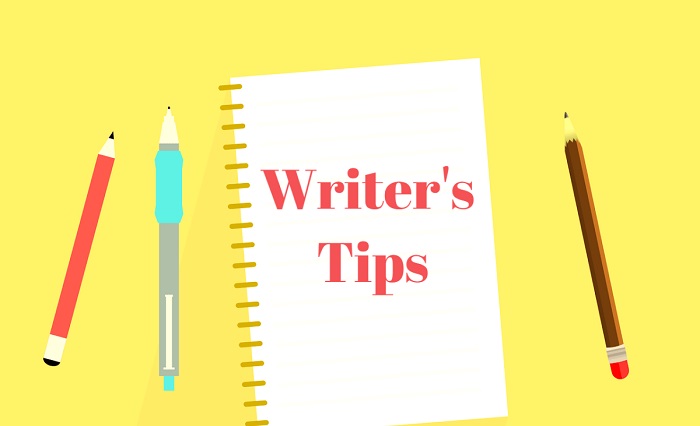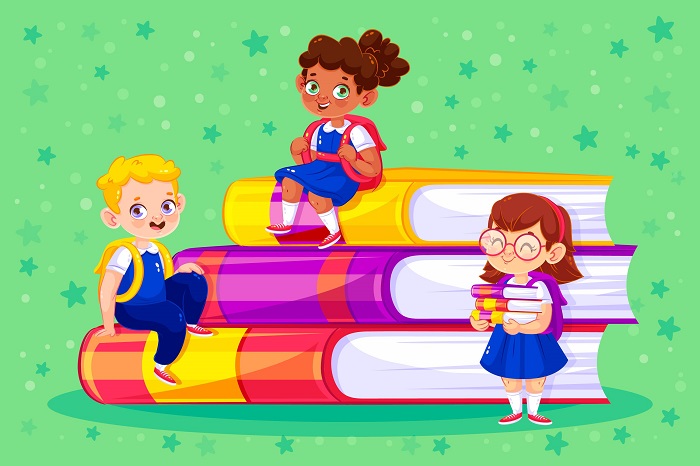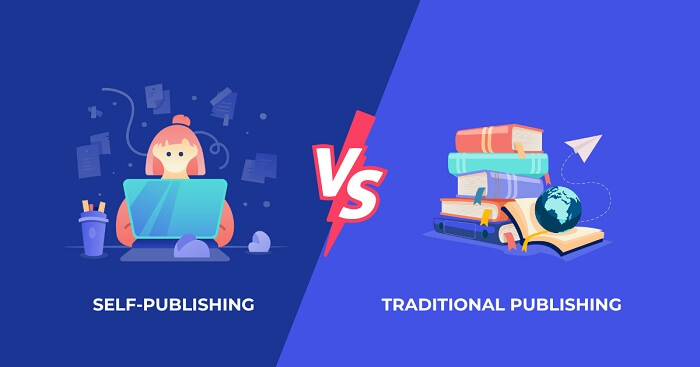When you write a kids book, you enter a world of possibilities. Fun, a little challenging, but well worth the effort. Even though there are new novels published every day, that doesn’t mean you should wait. In fact, it’s a chance to introduce something new. You might have an idea if you’ve been thinking “I want to write a children’s book” and perhaps you’ve already begun writing too. However, making children laugh, think, or even dream a bit bigger is the goal of How to Write a Children’s Book for young readers, not just getting words on paper. So, if you want your book to be the one with dog-eared pages and a missing cover because it’s been loved to pieces, you’re in the right place.
Why Writing a Standout Children’s Book Matters
The children’s book market is enormous and increasing daily. It’s an imaginative universe, but the problem is that most books don’t get much attention. They never make it to the readers who need them because they get lost in the shuffle. Why? Because of the fierce competition! To stand out in the crowded field of writers, stories, and ideas, you must truly have something special for children.
You can’t forget about originality on the topic of how to write a kid’s book. You need to bring something new to the table. What is the twist that would make children want to read your book? Then there is storytelling. Like a good friend, successful children’s book win your attention you and make you want to return for more. Your book could end up collecting dust if you don’t have a great story. Think about marketability as well. For a story to be read, it must be published. If it’s only on your shelf, nobody will notice it’s the next big thing.
This guide is your secret tool to succeed in children’s books. It’ll help you stand out, grab attention, and make your story a favorite. It won’t make you a bestseller overnight, but it’ll give you the tips you need to get started with writing a children’s book. Let’s start!
The Process Behind Children’s Book Writing

What is the process of writing a children’s book? Is it hard to write a children’s book? Well, the idea of creating a book the little kids will love might feel like a mountain to climb at first, but breaking it down into steps can make it feel a little more doable.
1. Select the Format
When choosing the format for your children’s book, think about which style will suit your story and characters best. A picture book with a few simple words might be enough for the idea you have in mind, or perhaps you will need a book with chapters and many pages. There’s no right or wrong so just do what feels right.
2. Know Your Target Category
You need to keep your readers in mind from the very start so that you know which themes you can use. So, what to write in a kid’s book? Little kids enjoy books with rhymes, pictures and simple words. Children who are a little older prefer books with a bit more depth.
3. Decide An Eye-Catching Title
The title of a children’s book should have the magic to pull them in from the very first look. It should be memorable and if it’s funny, even better! The title should make kids curious about what will happen next or make them giggle so be sure to make it fun.
4. Find Your Writing Style
It’s important to write in a way that feels natural to you, don’t fake it! Imagine yourself reading your book to children in person, and write in that same tone. Kids love reading stories that make them feel like the author is having an exciting conversation with them.
5. Incorporate Important Elements
If you want your book to become the next children’s favourite, then you need to include elements that they love – magic, adventure and of course, friendship! You can make the story even more interesting by creating a problem that your characters have to solve.
6. Create Solid Characters
Kids find it easy to connect with characters who feel real and relatable. If reading about your main character makes a little kid say “Hey, this guy sounds just like me,” then you’ve scored a big win!
8. Make the Story Engaging
Your story should be exciting, but not too fast-paced. There should be a few surprise twists and turns here and there so that children would want to read the book till the very end, and then again from the start.
9. Proofread and Edit
Once you’ve completed writing your story, go back to the start and read it out loud. Does it make you laugh? Does it teach a meaningful lesson? Are the words easy to understand? Make any edits that you think will make your book the best it can be before you publish it.
Tips for Writing A Children’s Book

Here are some children’s book writing tips that can help make your story even more enjoyable for young readers:
- Keep your writing simple and easy to understand so that children can follow the story from start to end without getting lost. Try not to use complicated words or long sentences because those might overwhelm young readers.
- Use repetition of words or phrases throughout the book so that the important parts of your story become easier for kids to remember.
- Make sure your story is fun to read out loud for children and parents. Use rhyme, rhythm, and a smooth flow to make your writing more exciting.
- Create characters for your book that are interesting and relatable for kids. The dialogues should feel real so that children can form a connection with the characters and want to follow along in their adventures.
Understanding Your Audience: Who Are You Writing For?
Is it easy to write a children’s book? Yes, but writing a children’s book is not just about telling fun stories. It’s also about understanding what the target audience for children’s books wants from a book. Parents, teachers, and libraries will be the ones buying it and recommending it, after all. Let’s look at answers to the question “how can i write a children’s book” that both kids and adults will enjoy reading.
Age Categories and Reader Expectations
Writing age-appropriate books is only possible by knowing who your readers will be. Knowing what kids like and where they’re at helps authors find answers to the question how to write a children’s book?
- Board Books (Ages 0-3): Think things simple. Use easy words and repeat them a lot. They love repetition because it helps them learn. The pictures should be bright and simple to grab their attention.
- Picture Books (Ages 3-7): These are the popular kids’s books that they remember forever. The stories here should be fun and full of feeling. These books are meant to be read out loud, so make sure the rhythm and flow are easy for parents to enjoy too.
- Early Readers (Ages 5-9): Kids are just starting to read on their own. Keep the sentences short and simple, and the story should be easy to follow. These books should still be fun, like stepping stones to bigger books.
- Chapter Books (Ages 7-10): You can make the story a bit longer. There should be more chapters, and the story can have more characters. Kids at this age like humor and adventure, but they can handle a bit more complexity too.
- Middle Grade (Ages 8-12): At this stage, kids want stories that feel real but still enjoyable. They’re ready for characters that grow and change, and they want to see themselves in the story. These books can dive into bigger issues, but only at surface-level.
What Kids Love Today
Kids today know their technology and want stories that fit their world. On the topic of best themes for children’s books these days, Interactive books are a hit, like ones with flaps to lift or even those with augmented reality (AR).
They also love adventure, funny moments, and fantasy. Books with magical places or strange creatures really get their attention. However, when thinking about what to write a children’s book about, remember that kids also want stories that feel real to them including characters they can relate to. Seeing themselves in books, no matter their background, matters to them now more than ever.
What Parents, Educators, and Librarians Look For

When creating a childrens book, not to be overlooked are the grownups involved. Decisions about what to buy are made by parents, teachers, and librarians. Sure, they want entertaining books, but they also want informative ones. A book that teaches something, encourages good behaviour, or helps in children’s emotional growth is a big selling point. Books with wonderful content and artwork are also what they’re searching for.
Crafting a Unique and Engaging Story
Now that you have an idea about your target audience, you can focus on how to write a children’s story. You need a concept that is both entertaining and creative. To be able to hold young readers’ attention, a good children’s book will feature a fascinating topic that feels both original and familiar.
How to Develop a Standout Premise
Look into well-known themes first, such as a small animal’s adventures, a young child’s adventure, or the battle to be brave, but with a new spin. Finding a new point of view that hasn’t been overdone is the trick to finding unique story ideas for kids. Study existing sources to figure out how your story could stand out as special.
Building Strong Characters Kids Will Love
Developing characters for kids that they will love is key when writing a children’s novel. Children need characters that they can relate to. Your primary character should be special, whether they are a humorous hero, an oddball animal, or a regular child in a strange setting. The character should grow or change in the story and feel relatable. Kids connect with characters they can relate to, making them more likely to keep reading when they feel an emotional bond with the story.
Storytelling Techniques For Children’s Books
A memorable children’s story often makes use of well-known narrative devices. For instance, the Rule of Three is a simple yet effective framework that is ideal for children’s literature. Young readers will find it easy to follow and enjoyable. Usually, the order is setup, conflict, and resolution. It is helpful and a classic. Circular storytelling is another great technique, in which the story begins and finishes in a similar way. The predictability gives children a sense of finality, which they like.
Writing Style and Language: Making Every Word Count
In general, the writing style for children’s books is always clear yet powerful. Since children have short attention spans, you must avoid making things too complicated and instead go right to the point. Rhyming children’s books, clear language, and simple sentences are key.
Using Simple, Yet Impactful Language
How to write children’s stories? Your target age group should be represented in the language you use. How to write engaging text? Choose short sentences and basic words for younger children. Don’t underestimate the importance of wordplay, though. The way that children react to a story can be strongly shaped by rhyme and rhythm.
The Power of Rhyme, Rhythm, and Repetition
Many beloved children’s books, like Dr. Seuss, make reading fun by using rhyme and repetition. Kids and parents both enjoy the rhythm in read-aloud books, and repetition makes it easier for children to remember and learn.
The Role of Illustrations: Bringing Your Story to Life

The best illustrations for children’s books have a powerful impact that cannot be forgotten. They often have just as much importance as the actual words. Even if you are not an illustrator, you should be well-aware of the role that they play. They help in telling the story, setting the mood, and drawing the reader in.
Why Illustrations Matter
Especially in a children’s book, a picture speaks a thousand words. The story’s emotional tone, deeper levels of meaning, and visual appeal for children can all be improved with well-chosen drawings. Hiring a book illustrator to create beautiful pictures can transform an ordinary book into a memorable one, and children often remember the pictures just as much as the story.
Text and Image Balance
In picture books, having a good text-image balance is important. Too much text can overwhelm kids, and too little can make the story feel empty. Make sure the pictures help in telling the story and that the tempo is right with picture book formatting.
Market trends in publishing: What Sells in Today’s Children’s Book Industry?
Knowing what children like to read is helpful if you write children’s books. Knowing what topics, characters, and styles are popular can help you come up with amazing ideas how to write a children’s book, but you don’t have to follow every trend.
Themes and Genres That Are Trending in 2025
Popular themes in kid’s books include STEM (science, technology, engineering, and math). Parents and teachers enjoy books that help kids understand and manage their feelings, as well as get along with others. There’s also a big interest in books that show characters from different cultures, as people want more diversity in the stories kids read.
Analyzing Bestsellers to Learn What Works
Looking into the best-selling children’s books is one method to see what works. Many popular books have diverse characters and teach important lessons. People like books that are interesting and make them think. It’s important to know what readers enjoy, whether it’s an inspiring message, a new story, or a fresh idea. Books that stand out can be created by blending your creativity with popular culture.
The Growing Importance of Representation in Children’s Books
Diverse children’s books are really important because they help children see people like them in the stories. It’s about showing different cultures, races, and ways people think. It’s also important to avoid stereotypes and make characters feel real. Honest stories help kids feel connected and understood. It helps them appreciate others and feel like they matter in the world.
Publishing Path: Traditional vs. Self-Publishing

There are two options you can choose from when it comes to publishing a children’s book: traditional publishing vs. self-publishing. Each has its own steps, challenges, and benefits.
Traditional Publishing Route
Traditional publishing means working with a publisher who takes care of editing, design, printing, and distribution. It takes time, but it gives you more reach, expert help, and the trust of a big company. Finding a publisher to accept your book is the difficult part. Most big publishers do not accept direct author submissions. Literary agents can help with that.
Finding a Literary Agent
So, how to publish a children’s book? Traditional publishing often begins with hiring a literary agency. Agents serve as a link between authors and publishers, helping the visibility of books. The secret is to find someone who works with children’s literature. Check their guidelines for submissions. While some want sample pages, others prefer a brief letter.
Submitting a Query Letter and Manuscript
A query letter is essentially a brief book proposal. It must quickly grab attention. Yours must be unique because agents receive hundreds of these. They may request a preview or the entire book if they enjoy it. An agent will offer to represent you if they think it’s outstanding. If not, keep trying.
What Publishers Look for in Children’s Books
A strong story, unique voice, and engaging characters. Publishers also think about marketability: Will parents, teachers, and kids buy it? Does it feel fresh but still fit what’s popular? Publishers handle editing, cover design, and printing but keep most of the profits.
Self-Publishing Route
Choosing the self-publishing route is a great option for many writers. It gives you complete control over your book, from the story to the cover design. You don’t have to wait for a publisher’s approval, and you can self-publish a picture book whenever you’re ready. Plus, you keep most of the profits! It’s a lot of work, though since marketing, distribution, and everything else is up to you.
Amazon KDP, IngramSpark, and Other Platforms
Self-publishing means skipping agents and publishers; you control everything. Platforms like Amazon KDP and IngramSpark let anyone publish. Upload the book, set a price, and sell. Print-on-demand means books are only printed when ordered, so no big upfront costs.
Costs, Distribution, and Marketing Strategies
Paying for editing, illustrations, and cover design yourself is the price of self-publishing. Books with poor quality will not sell. And you’re responsible for marketing. Promotions, commercials, and social media are helpful, but they need time. Getting into libraries and bookstores is harder but possible with effort.
The Pros and Cons of Self-Publishing a Children’s Book
Pros: Full control, higher earnings, no waiting for approval.
Cons: More upfront costs, all marketing is on you, harder to get into bookstores.
Marketing and Promotion: Getting Your Book Noticed

Writing the book is one thing but getting it out there? That’s the real challenge. Marketing a children’s book is tough. It takes time, effort, and some creativity to get noticed. You’ve put your heart into the story, now it’s about sharing it with the right people including parents, teachers, and kids. The journey to getting your book noticed is where the real fun begins!
Building Your Author Brand
People need to know who you are before they buy your book. Children’s book advertising makes it easier for teachers, parents, and readers to find you. It adds credibility and professionalism to your book. Even after your first book is out, a strong brand continues to draw people’s interest in your work.
Website, Social Media Presence, and Email List
A website makes it easy for people to find you and your book for young readers . It should have your contact info, a short bio, and details about your book. You can use social media for authors to share updates with readers. An email list helps you send news, special offers, and updates.
Connecting with Children’s Book Bloggers and Influencers
Influencers and book bloggers can spread the word about your work. Many educators and parents trust their recommendations. Speak with them and offer a complimentary review copy. If they enjoy your book, they may post it on YouTube, their blog, or social media, which could give you exposure.
Book Promotion Strategies That Work
People are more likely to read your book if they hear about it more. A solid marketing strategy makes your work more noticeable to parents, educators, and children.
Getting Book Reviews from Parents, Educators, and Librarians
Feedback from educators, parents, and librarians can help your book gain popularity and credibility. If children like it, if it helps in learning, and if it works well in schools and libraries, they can share. Offer free copies in return for honest reviews, get in touch with libraries and schools, or join online book groups to collect their opinions. Their recommendations may inspire more people to buy and read your book.
Hosting Virtual Readings, School Visits, and Bookstore Events
Live readings give books a new life. Virtual readings let you communicate with kids online, while school visits let you interact with them in person. At bookshop events, you might meet readers, sign copies, and interact with families. These actions help spread the word about your book.
Running Giveaways and Contests
One of the best methods to get people talking about your book is to give away copies. The chance to win a free book is a favourite among readers. Contests can promote participation as well. You may encourage children to create a short tale or illustrate a scene from your book. A free book is given to the winners, and your work attracts additional attention.
Advertising and Distribution
Once your book is ready, advertising and distribution are what help it actually reach readers. Whether it’s through social media, local book events, or getting your book into stores, this is the part where all your hard work starts paying off.
Using Amazon Ads, Facebook Ads, and Instagram Promotions
More people will see your book if you advertise it. While Facebook and Instagram advertisements target parents and teachers, Amazon ads target book buyers. With careful use, even a limited budget can lead to excellent results.
Expanding into Libraries, Schools, and Bookstores
It takes work to get into bookshops, schools, and libraries. Self-published authors must do this themselves, whereas traditional publishers take care of it for you. Make contact with nearby libraries and schools, offer review copies, and go over the value of your work. The more places that carry your book, the more readers it will reach.
Conclusion
Now that you know the basics of how to write a children’s book, go ahead and get started. When publishing a kid’s book, don’t aim for perfection, just make it enjoyable for your readers and stay true to your voice. Enjoy the process and have a good time. Every great children’s book starts with one step, so don’t stress about mistakes. Kids love relatable characters and exciting stories, so don’t worry too much about logic. Whether your project is a picture book, a fairytale or a work of fiction, take your time to make your story the best it can be. Your hard work will pay off when children all over the world read and fall in love with your book so write from your heart and follow our children’s book writing tips.
Frequently Asked Question (FAQ’s)
How can I be successful at writing children’s books?
Tell interesting stories that kids will want to read. Practice often, revise your work, and ask others for ideas. Keep learning about what kids enjoy.
What is most important when writing a children’s book?
Make the story fun, simple, and exciting. Keep the words simple, sentences short, and your characters lovable. Kids love stories they can understand and enjoy.
How much does a beginning children’s book author make in their first year?
It’s different for everyone. While most first-time writers make little money, others make more if their book succeeds.
What should you not do when writing a children’s book?
When writing a kids book, it’s important to avoid difficult words. Stick to easy, exciting words that kids can read and enjoy without getting confused or bored while reading.
